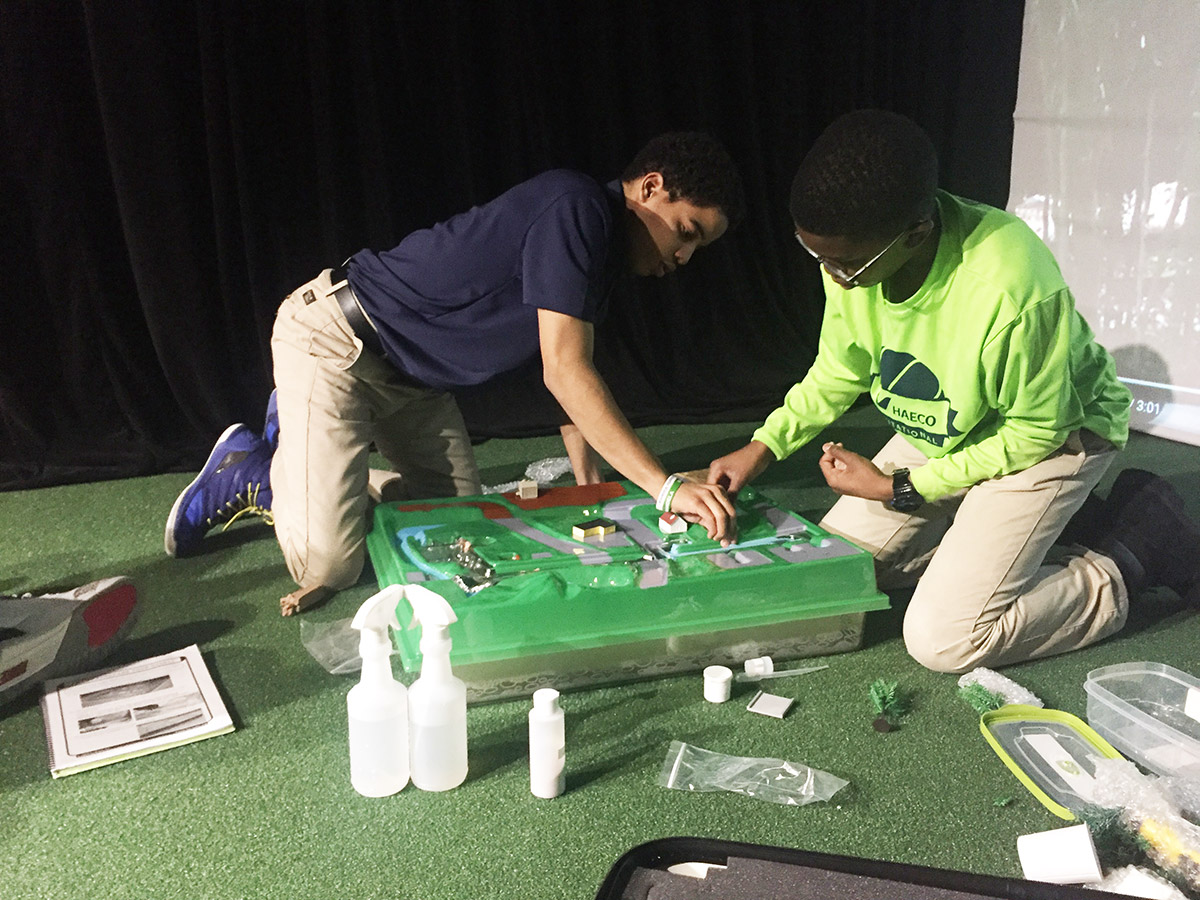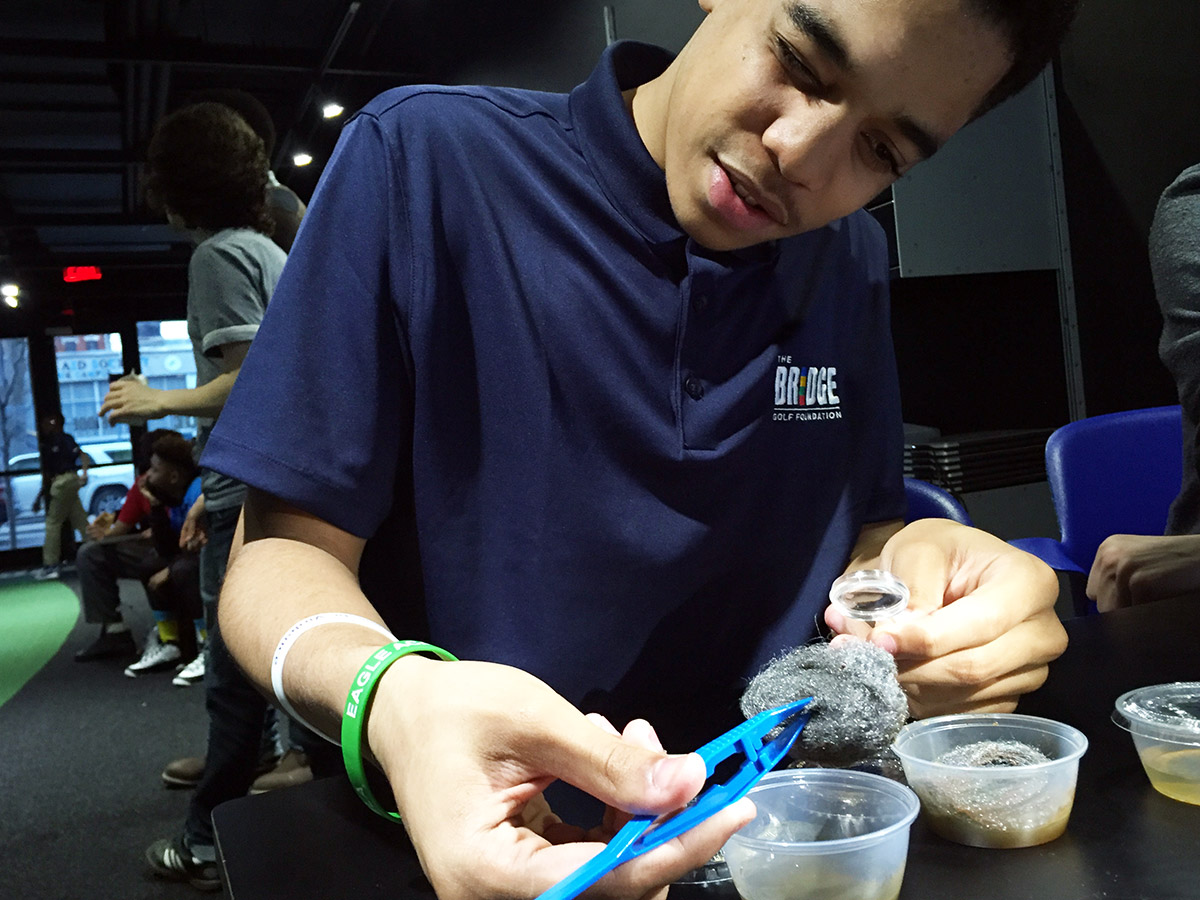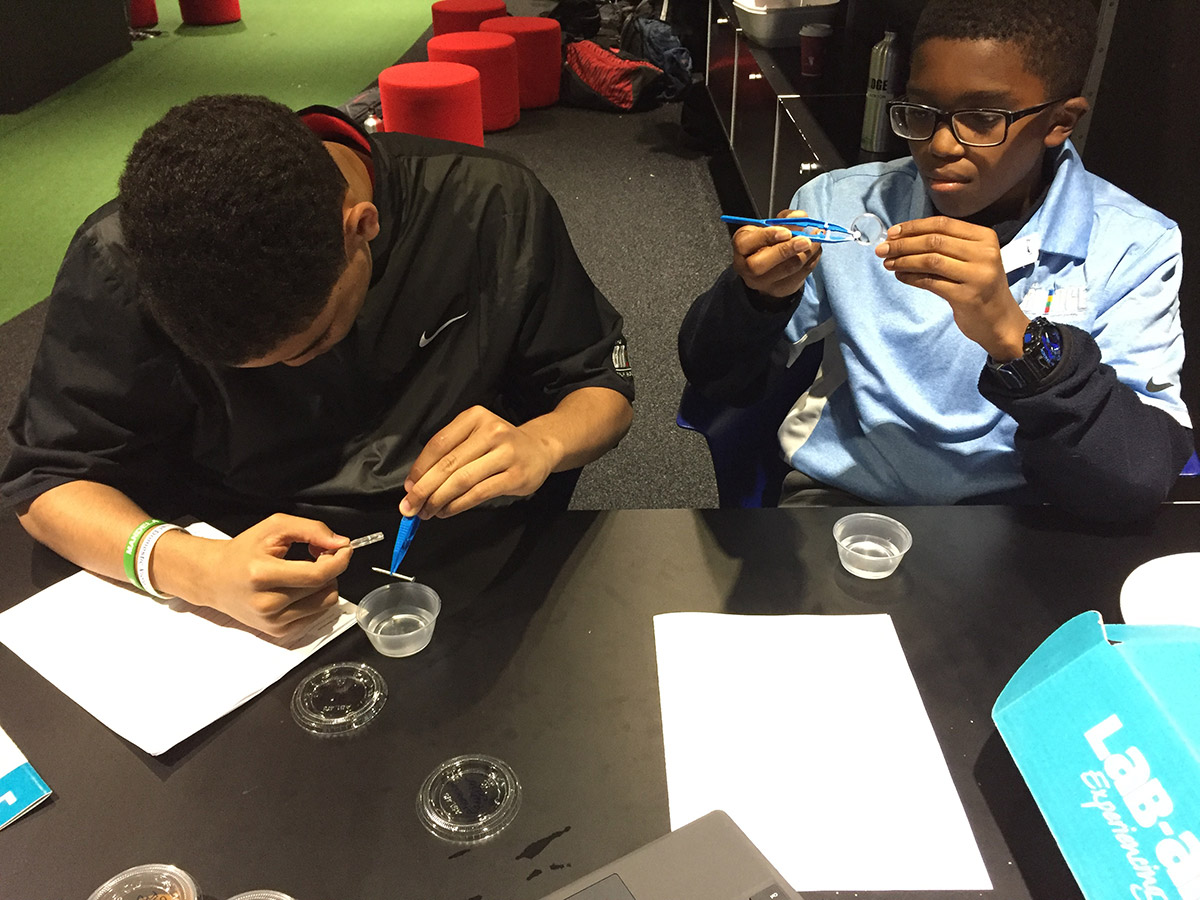By Tiffani Kolozian, STEM Program Assistant
When we think about the global water crisis, we often look to far-away destinations, like the villages in Zambia that will benefit from our fundraiser with Golf Fore Africa. But the plight of Flint, MI, shows that a water crisis can also happen in an American city.
The Bridge Golf Foundation’s Water Fair on June 3 — presented in partnership with the Columbia Water Center, the Eagle Academy for Young Men of Harlem, and the Physics Department at The City College of New York — is designed to address the environmental and socioeconomic issues surrounding water. For our group project, we decided to focus on the lead contamination in Flint by studying the chemistry of corrosion, pollution and water treatment as well as the environmental injustice aspect of the crisis.
Our students studied how metals corrode and which properties of water make it more or less corrosive. To gather data for their presentation, they immersed a variety of metal objects in different water samples and recorded the varying levels of corrosion.
“In order to fully grasp what happened in Flint, we needed to learn the science behind why lead leached into the drinking water there and the properties of the water that accelerated the degradation of the infrastructure,” said Antonio Cortorreal. “We wanted to see if we could re-create what happened chemically in a controlled environment by experimenting with different metals in various conditions.”

Antonio and Xavier with the EnviroScape.
We also used an EnviroScape to investigate how water sources, water treatment, and wastewater treatment interact.
“The Enviroscape represents how water is transported throughout towns and large cities,” Xavier Partee said. “We used it to visualize how water is treated after being collected from water sources and what it looks like after leaving our factories, buildings, and suburban homes.”
Noah Folks and Mark Jones led our study of the events and decisions that led to the crisis as well as other cases of environmental injustice.
“We realize that we are privileged to have access to clean water here in New York City, and that we have one of the best water sources in the country,” Noah said. “But in other cities and towns, the water isn’t as clean and people of color and people in poverty have suffered.”
This project has been a great combination of STEM research and service learning. To see our group’s final presentation and findings, and meet the young scientists and activists behind it, RSVP today and come to the Water Fair on June 3.

Antonio examining steel wool after immersing it in water.
